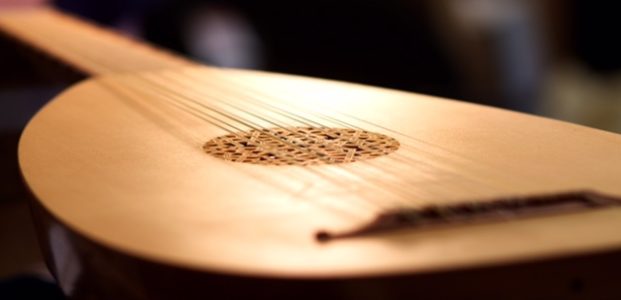It has been a while since the last instalment of the “Shop Talk” series (past entries in this series can be found on my old blog here). Today’s guest is my former guitar teacher from the University of Western Ontario where I completed my Bachelor’s degree. Wilma started building instruments around the time that started as a student there, so I remember seeing her first instruments, and then hearing about her training when we chatted at the beginning and end of lessons over the course of those four years. I hope that you enjoy reading her answers to my questions as much as I did.
As always with this series, I have conducted this interview via email, so most of this blog is not my work!
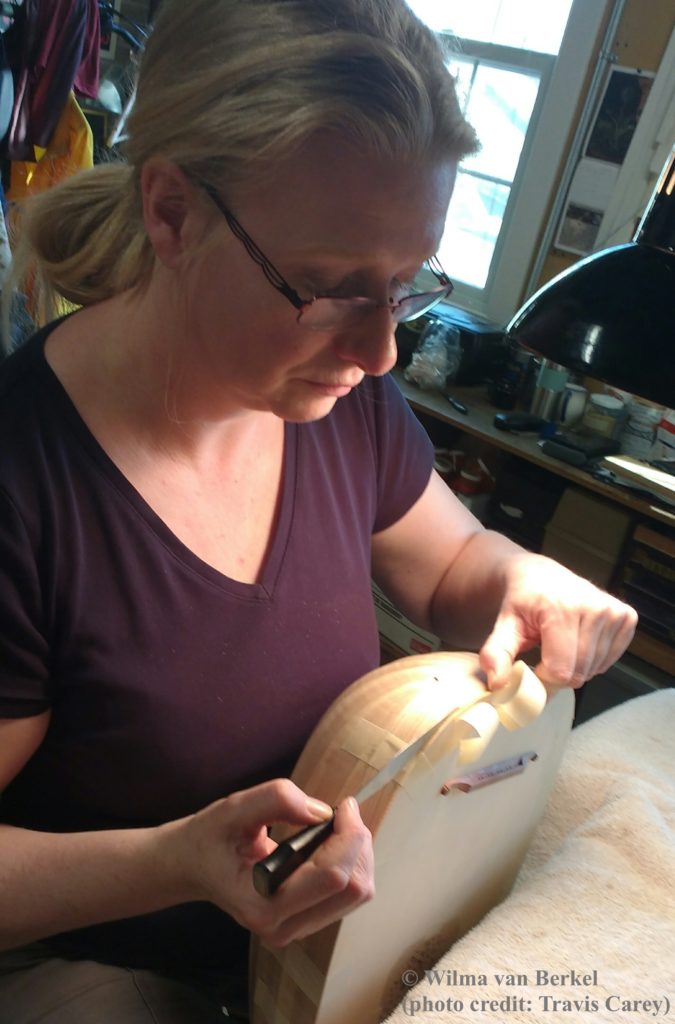
How did you get started building and what has your training looked like so far?
I got an email one day from a local guitar maker friend shortly after we ran into each other at the grocery store. We had not been in touch much and he does not even shop there usually, so it was a bit of a coincidence really. He remembered me saying how cool it would be to make an instrument. He wanted to make a lute and suggested that I would too. He supplied the tools and I ordered the David Van Edwards course materials. That is how it all started. I knew within a few weeks that this is what I need to do. All of a sudden I remembered again what it felt like to step in to Daniel Roye’s workshop in Amsterdam, to pick up my first custom guitar, at age 16: the smell, the colours, the coziness of that shop.
I was absolutely and totally hooked, but you have to understand I was also completely green to it all. If I had held tools at all, it was to hand them to my dad when he asked for them. I come from a background where girls were expected to pursue more “feminine crafts.” I was always good with my hands though, always making stuff, and, above all, I liked being immersed in the process. I did at one point visit a famous silver and goldsmithing school with the thought of going there, but music won out in the end and I pursued classical guitar studies. Building lutes ties in with this desire to create a tangible, beautiful object which you then get to pass on to someone else, who uses it for his or her own artistic pursuits. I consider this an incredible reward.
After that first lute was finished I had some decisions to make. I knew I needed instruction and, coming to this later in life, that that instruction needed to be of high caliber. In the end, I flew to Vancouver to meet with Ray Nurse. I had emailed him to get info on a course that might be given at UBC during the Early Music Festival in the summer. The course was not on that year, but he had “conferred with both his colleagues” (imagine my surprise!) and invited me to come out, bring a camera and a notebook and ask all the questions I might have! Incredibly generous. Once there, I also met Travis Carey and, on my last day there, Grant Tomlinson. It was a most inspirational week. I saw how they, as well as Ray’s partner, a bow maker, all had very different, but great workspaces. This helped me set up my own shop in a small 8×8 space.
This was the beginning of a very intense and enriching time. I made a baroque guitar on my own and took it to show Travis the following year. He and I had gotten to know each other a bit better during the next summer’s course. After seeing the guitar and working with me in his shop for a few days, he decided to take me on as his student. I did a lot of grant writing. Through various programs, over several years, the Ontario Arts Council helped me out greatly, covering travel and accommodation for a number of trips out west to study with Travis. Under Travis’s tutelage I built a lovely 6c lute, which was very well received. In between trips I was at home building my own stuff, practicing and applying what I had learned. Grant, Ray, and most of all Travis, who became my master, took me under their wing. I would say that what I know, I know because of them and I will be eternally grateful for their teaching.
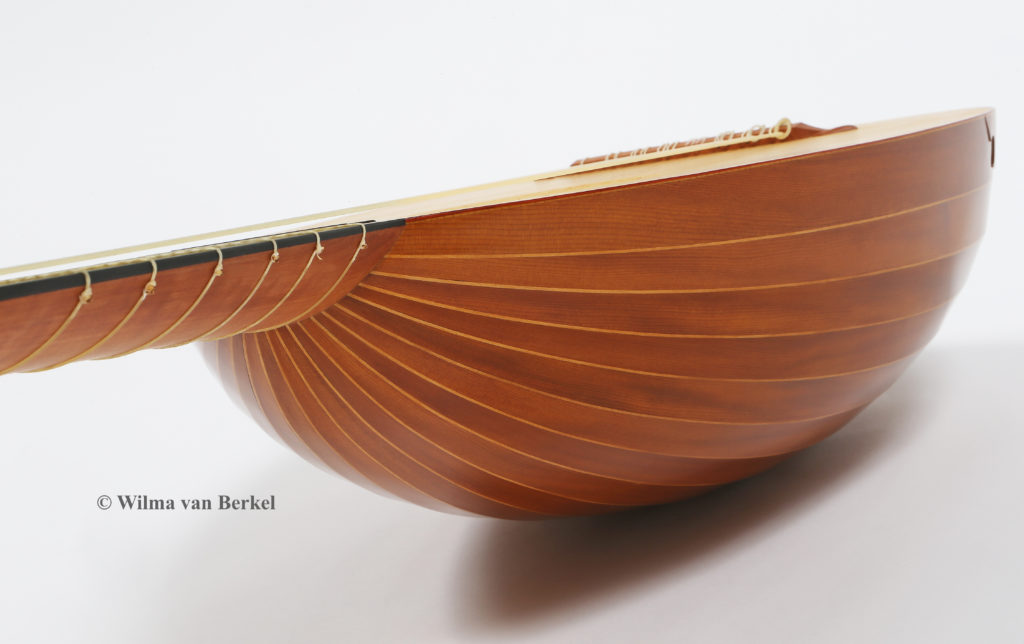
Has your career as a performer or teacher influenced any of your choices as a luthier?
One could say I built that first lute because I wanted to start to learn how to play, which I did. I studied lute privately with Lucas Harris in Toronto for a bit and played some theorbo. It was a logical extension of my professional life as a guitarist. All my own music teachers played early instruments. It just became unnatural to keep playing three hundred years worth of transcriptions without at least exploring the historical alternatives. I tried to go to as many concerts as I could. I attended the Tafelmusik Baroque Summer Institute several times as a participant, as well as the Oberlin Performance Institute, and various Lute Society of America Seminars in Cleveland, Vancouver and Victoria.
My ears are definitely trained on music, which is helpful when choosing material for a belly, or tuning it after it is barred and bridged, but I think the biggest influence comes from my guitar studio teaching. Every single student who shows up on your doorstep is different and as teachers we have to be able to get across the aspects of what we are teaching by trying many different methods. This is the process that has always been the most gratifying for me as a teacher, especially if there is good communication between the student and teacher. (I hope it was for you too, as you have experienced it first hand!) When, out of sheer necessity, I had became my own lutherie student and later found myself the lucky protégé of Travis, I had enough (self-)knowledge, through my years of teaching others, to be able to indicate to my mentors and Master how I had best learned so far, what works for me and what I have trouble with, and when I needed to be left alone to work or when to ask for help. I wasn’t always right, and being a student again was definitely a humbling experience, but one I now gratefully hang on to.
When I start my day, I set out to be aware of how I focus that day, asking “what is my level of engagement and readiness to learn and execute?” I don’t attach any emotion to having a “bad day,” at least not in the beginning. I have also learned that a well placed swearword can release unnecessary tension enough to be able to continue! I just try to deal with it. Even if I have to talk out loud. teaching myself the procedure as if I were showing a student. All these are things we do when we practise our instruments effectively. Or, as Travis once said to me: “Just assess what needs doing and find the best way to do it. Then do it.”
What do you have for a workshop at the moment?
I made the decision to move the shop out of the house three years ago and, until last fall, camped out in a small commercial building not far from my house. I liked it there—it was a good dry space, about 250 square feet, and everything I needed was there; no one bothered me. I liked the idea of “going to work.” It was great to have Travis there on a few occasions too, after attending LSA conventions in Cleveland, doing a few sessions on repair work. Since this past September, I have been back at the house again. It’s spacious and quiet here. I have commandeered most of the full height basement. The shop is about 450 square feet: a drawing/work space and a cutting space. I keep making a lot of adjustments. I have to say that I feel very lucky that we got ourselves installed here before the pandemic happened. The house is spacious and even with everyone at home I can keep working just fine.
Could you share a few of your favourite tools or jigs?
Great question! I would be nowhere without my low angle Veritas block plane. I think I use it every day. My bench plane is a close second. Then there are the tools that I have been encouraged to make myself, like my rose cutting tools. These are developing all the time, but my hands and these tools are starting to meet and that is very satisfying. I have learned a lot about useful jigs from Travis, Ray and Grant. On my first visit to Travis’s shop he showed me a shop tool he made to strip spacers/filaments; I copied it and I use it regularly. I have also made things that I no longer find good enough now that my skills are more evolved, so they need replacing with better ones. That said, I can get equally ecstatic about my newest mechanical pencil! (it’s not even expensive, but it is great!)
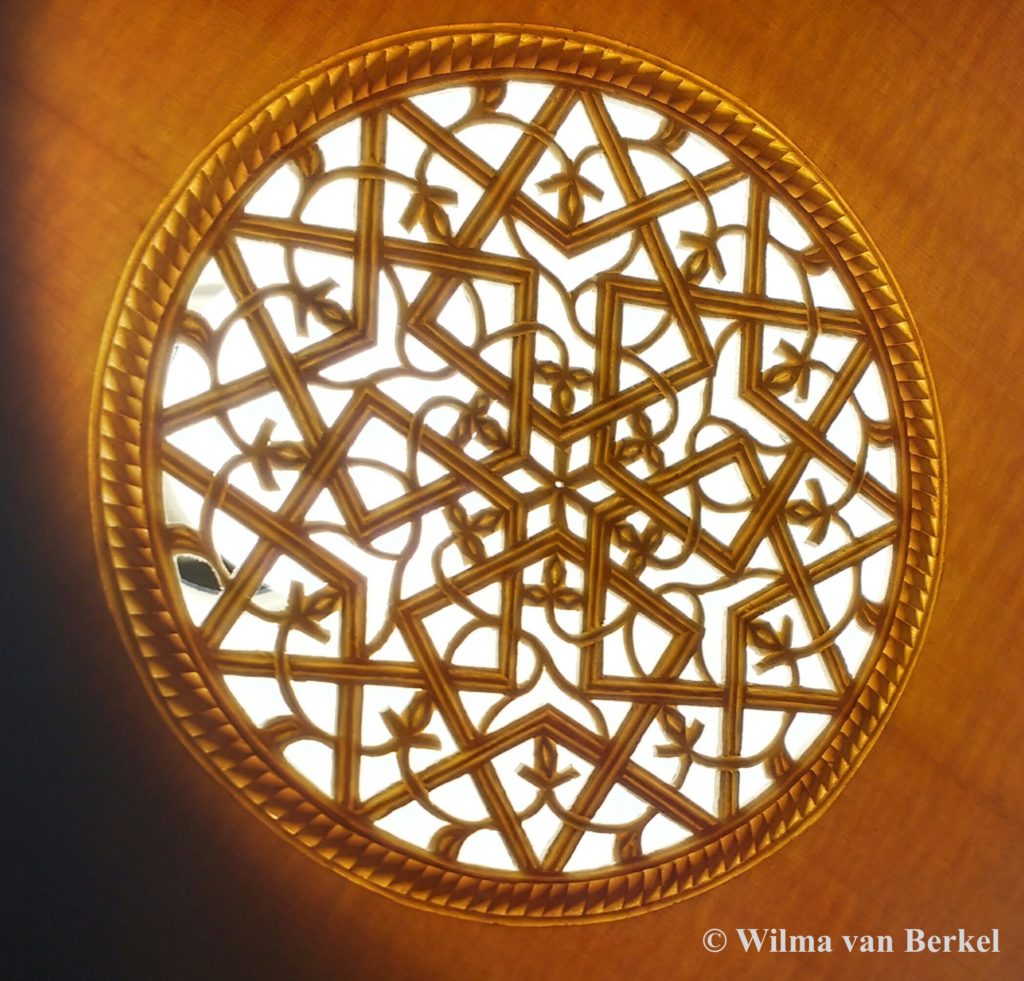
Any other nuggets of wisdom or thoughts to share?
I try to think of the building process “holistically.” It is much more than just working with the woods: it is historical research, the making of lay-out drawings, communicating with the client, all the while keeping meticulous notes and record drawings, so that you can reference your own work in the future. I am acutely aware of this step because Grant took all his research notes and taught Travis to do the same. I now benefit, and therefore I must do the same. It is safe to say that there is a ton of work being done that a client will never see directly, but which is crucial.
The most satisfying aspect of building is perhaps hearing the instrument played in the end. Not just new ones, but repaired ones too: the ones you take apart and rebuild, and the ones for which you make new bellies and barring. These last ones are often great opportunities to learn from (and make records of) the work of other makers.
I am blessed with knowing excellent players like Lucas Harris, who has let me work on a good number of his instruments, and Sylvain Bergeron. I get to present new instruments to them and they always give honest and straightforward feedback. Presenting to a trusted player always causes a strange mix of nerves and excitement, but it always proves meaningful. I consider it an essential part of lute building, as well as taking work to seminars/conventions so they get tried out by players of all levels. One learns a lot of good stuff from that. Presenting work to my master, which I do whenever I get a chance, is an altogether different experience. Excellent, a bit nerve wrecking of course, but, once I get past that, definitely good: more private and very instructional.
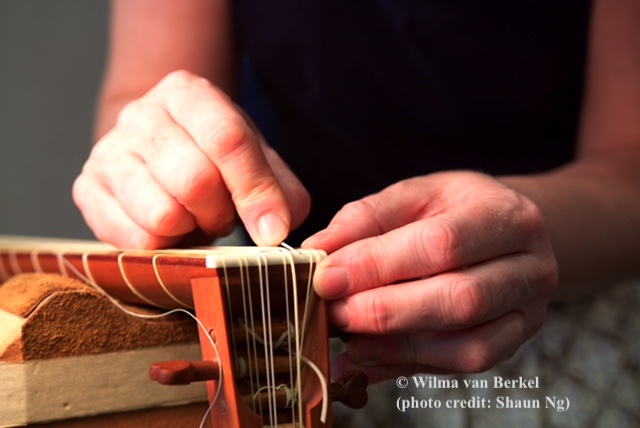
One last question: what are you working on right now?
At the moment I am working on my second batch of two flat-back baroque guitars. These came into being as my response to a request for a student instrument. They are quite paired down, no decoration apart from the most basic. They are inspired by the Stradivarius instruments, with the thought that the time spent making them should be spent on good wood and joinery, making a lasting instrument that can withstand the use by many a student. One is already in the Tafelmusik instrument bank in Toronto. Another became the much-liked instrument of a Canadian player, Jon Stuchbery who is studying in Spain with Xavier Diaz-Latorre. Of the new batch, one will go to the University of Michigan EMS string bank and the fourth… well, I already have had a few people expressing interest. I am also making a 7c Renaissance lute and a theorbo at the moment. The theorbo is a whole new chapter! Let’s say I am very happy I have a longer workbench and more space around it now! (and that my work space is full-height!) My client, after we had all the conversations about model, size, string lengths and the like, also gave me lot of freedom in the execution, which, to me, works out to be the most agreeable work situation.
You can read more about Wilma’s work on her website: https://www.wilmavanberkel.com/
A huge thank you to Wilma for her participation in this blog series. Let me know if you have suggestions of other luthiers from whom you would like to hear! I am hoping to continue this series with more interviews over the next few years (no promises as to when, haha). My own building and other work updates will be coming soon.
